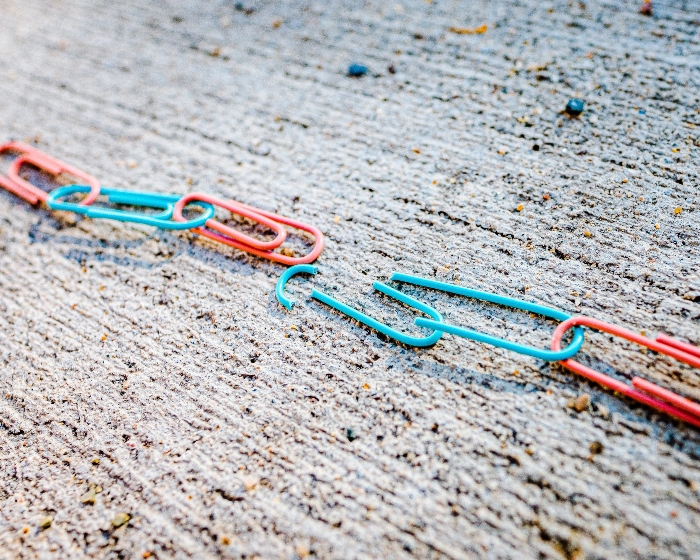How to Get Rid of Bad Backlinks to Improve Your Site’s SEO

In case you are unaware: Anyone with a website that cares about generating traffic needs to regularly check for bad backlinks.
If you were, in fact, unaware of this, you’re probably wondering why.
When your site has multiple bad backlinks, it can damage your website’s credibility. As if that isn’t bad enough, toxic backlinks can also cause Google to penalize your site, leading to a huge drop in your search engine rankings. This can seriously hurt your brand’s ability to grow, making it imperative that you consistently work on removing any and all toxic backlinks coming to your website.
Before we dive into how you should tackle removing them, let’s take a look at some examples of bad backlinks. According to Google’s link schemes guide, the following types of backlinks can negatively impact your website’s SEO:
- Links that come from link networks
- Sitewide links
- Links from spammy blog comments
- Directory links
- Links with over-optimized anchor texts
Now that you know the various forms that bad backlinks can take on, let’s discuss the three steps you can take to get rid of them to improve your website’s SEO rankings.
1. Collect Backlink Data
Before you officially begin your backlink detox, you need to compile a list of all the backlinks coming to your site from various sources. There are many free and paid online tools that can help you do this, including Google Search Console (which is one of the free resources, for anyone who was wondering). To use Google Search Console for this step, start by verifying that your domain is connected to Google Analytics. Once you’ve done that, go to Google Search Console, select the “Search Traffic” button, and then click on “Links to Your Site”. This will direct you to the next page, where you will need to select “More” under the “Who Links the Most” section. Lastly, to get a copy of the list of all your backlinks in CSV format, you should hit the “Download More Sample Links” button.
2. Identify the Bad Backlinks
Now that you have a list of all of your backlinks, it’s time to sift through each one. While Google Search Console doesn’t identify which backlinks are toxic, there are other ways to perform his step. Namely, you can manually do it yourself or you can pay a company that conducts SEO health check audits to do it for you. If you choose the DIY route, be sure to ask yourself whether the link’s content is relevant to your site as you’re checking each link. If it is – great! If it isn’t – the backlink is likely not adding any value to your inbound link profile.
3. Remove ‘Em
To remove toxic backlinks, you have two options:
- You can get in touch with the owners of the linking websites and ask them to delete the bad backlinks. When you do this, be sure to specify the exact location of the backlink that you want to be removed. If the owner doesn’t respond within five to ten days, you can send them an additional follow-up email.
- If the site owner you’re trying to reach refuses to comply with your request to remove the toxic backlinks or they fail to respond, Google lets you disavow the backlinks that you do not want to be associated with your site.
If manually combing through each of your site’s backlinks doesn’t sound like your thing, you’re in luck, because it’s definitely our thing. Contact us today to learn more about the other ways we can improve your site’s SEO via our SEO services.
Posted in: How To, Search Engine Optimization, SEO, WWW Learning Center
Comments are closed.
Latest & Greatest
- Beyond Pretty Pictures: Why Solid Web Design Matters (More Than You May Think)
- Getting Creative with Your 404 Not Found Page Design
- Web Design Solutions: Which Option Is Right For You?
- Maximize Your Site Redesign Budget: What Texas Web Developers Need From You for a Cost-Effective Collaboration
- Responsive Web Design in Austin: Why It Matters For Your Local Business
- How to Prepare Your Website for a PR Campaign
- Why Defining Your Organization’s Strategy is Key to Brand and Marketing Development
